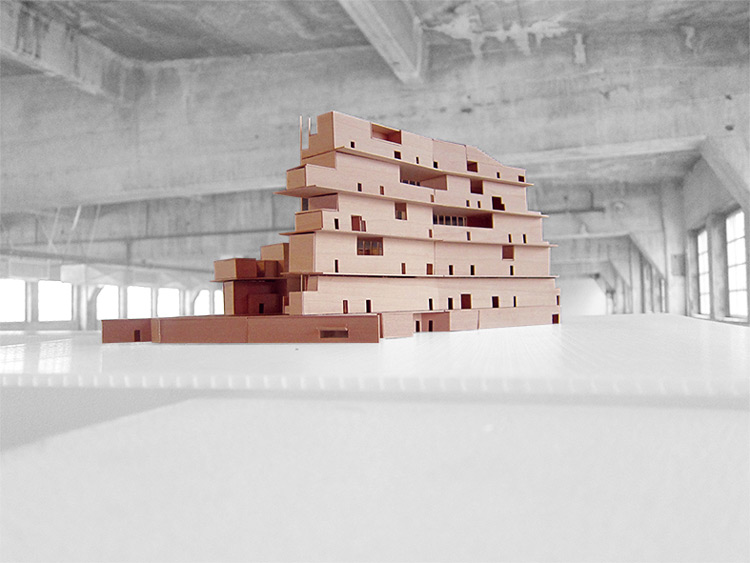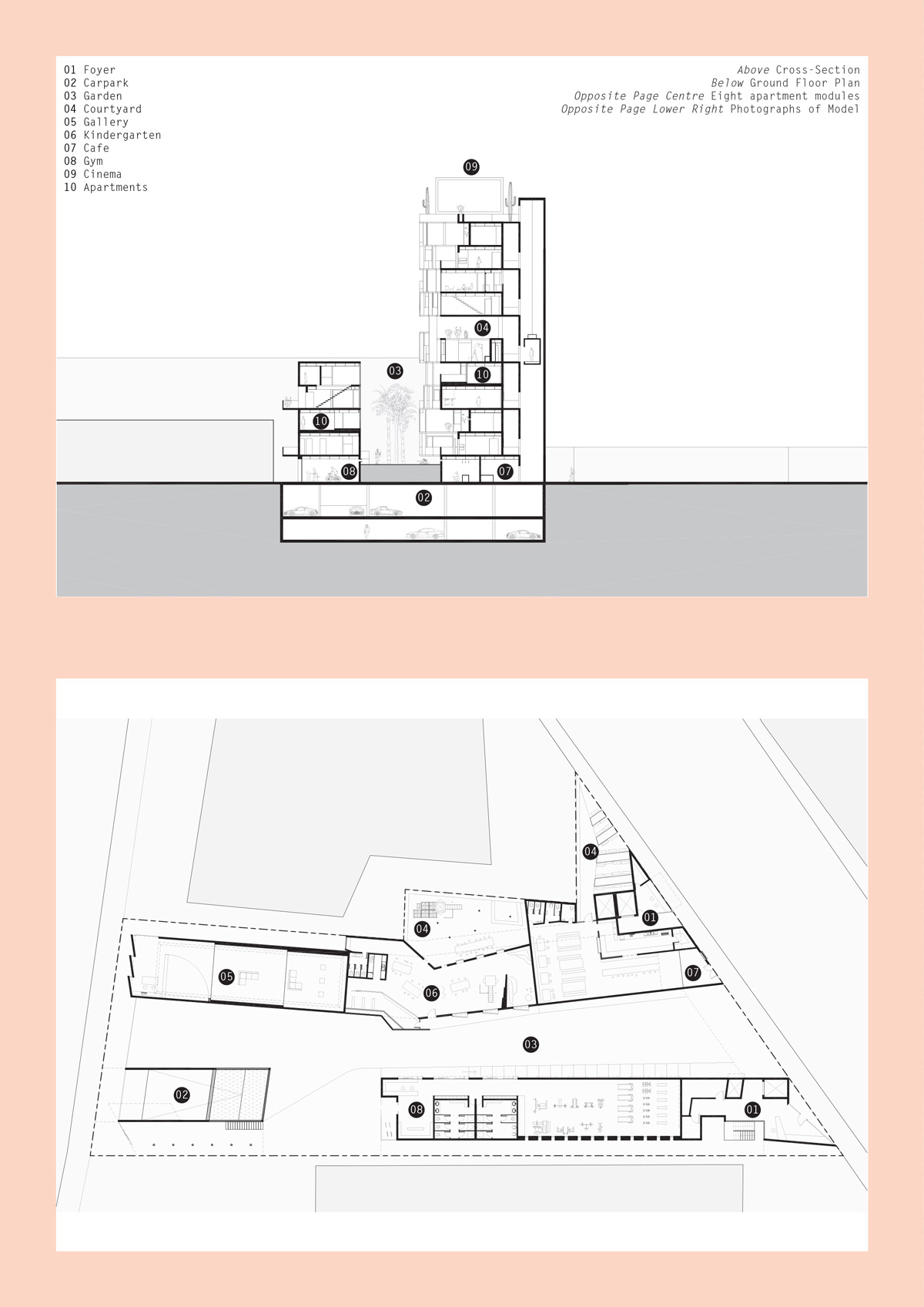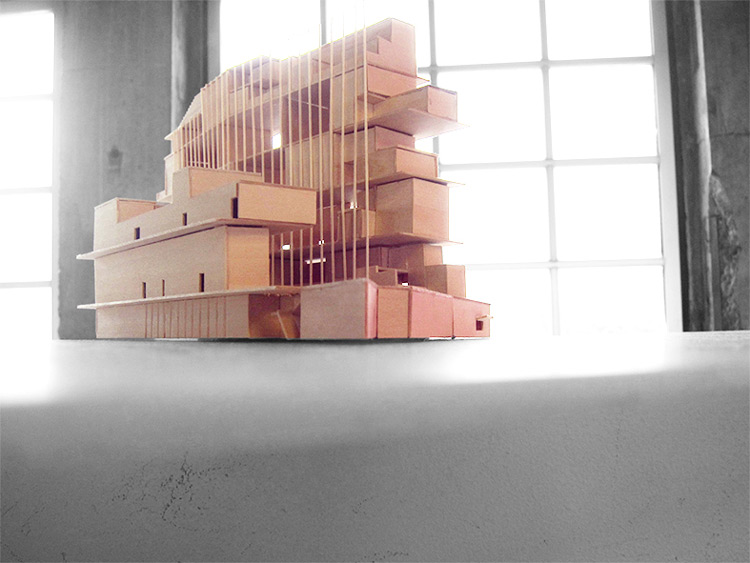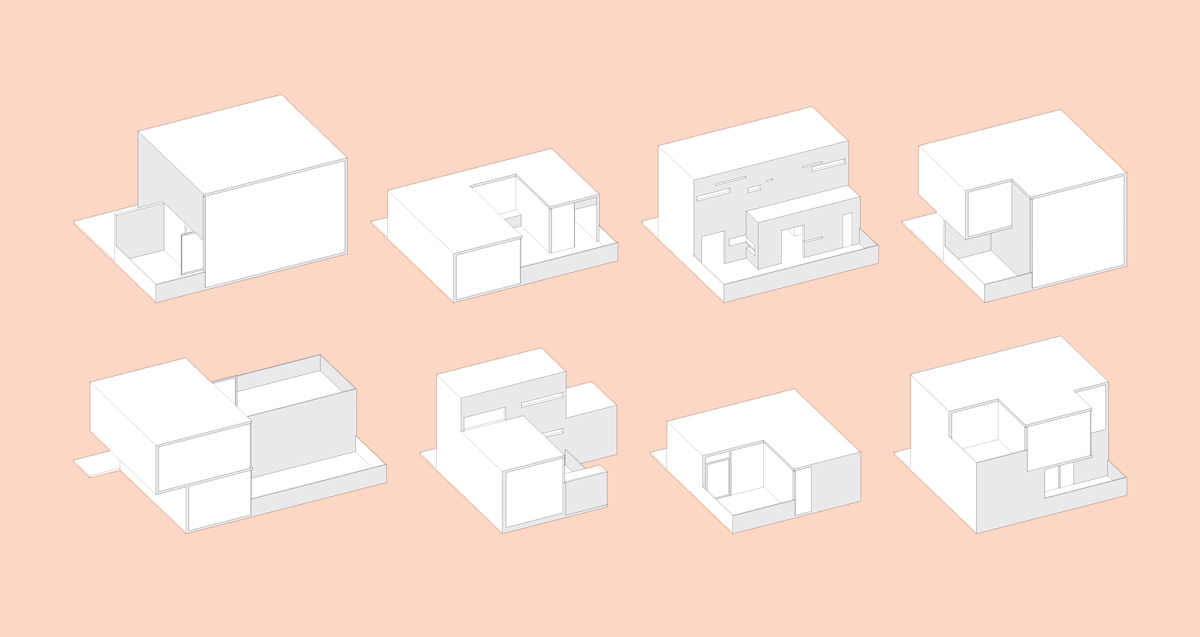under supervision of Robert Mangurian and Mary-Ann Ray at SCI-Arc
This project explored the idea of a place for living as a condition to excite energy and activation between the living and the locale.
“A building today is interesting only if it is more than itself; if it charges the space around it with connective possibilities.”
— Alison and Peter Smithson, Changing the Art of Inhabitation, Artemis, London, 1994, p. 16
One of the things that initially intrigued me about Downtown Los Angeles was the lifelessness of the facades as projections to the street, especially in a city so well known for its consumption of attention.
Theoretically I am concerned with what role the architect has in creating spaces that have the potential to become activated at the conclusion of the architect’s involvement. It requires the skill to know when, where and how to withdraw, to provide the occupant with an ability to sculpt their own environment.
Evidently, the nature of housing should carefully consider the realms of public and private. In a density of housing such as this, communal spaces become as necessary as private ones. The ‘threshold’ space becomes pertinent in the consideration of architecture; what is private? Public? What is to become the in-between, the shared residential spaces?
This is a project which attempts to give something back to the city that takes.




